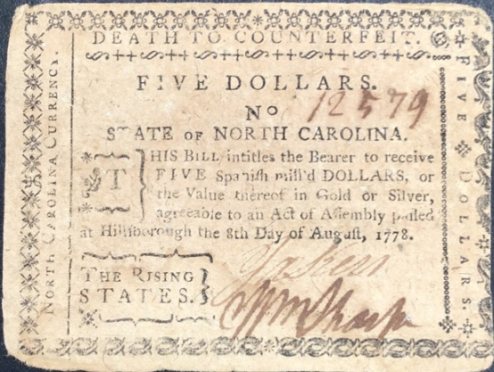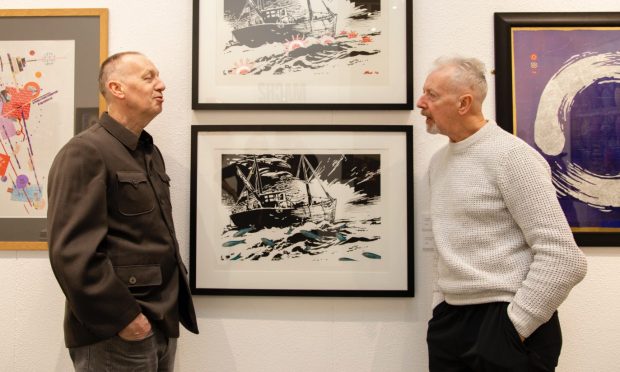Now why would I show a $5 note on St Andrew’s Day, the special day of Scotland’s patron saint? Curiously, there is a connection.
Although St Andrew’s Day has become special to Scots the world over, the celebration of November 30 as a Scottish cultural landmark only began in the 18th Century. It was not even started in Scotland, but by a group of Scottish exiles in the United States.
The St Andrew’s Society of Charleston, South Carolina, founded in 1729 by a group of Scottish immigrants, claims to be the oldest Scottish society in the world, the progenitor of 100 organisations to bear the saint’s name. And, traditionally, they will offer each other greetings today.
So back to the $5 dollar note, which appears at Hanson’s of Derbyshire’s live internet auction this week, with a £400-£600 estimate.
It is lotted as a Colony of South Carolina five-dollar bill from August 1778 with The Rising States motto, but clearly states that it is No 12579 of North Carolina state. Typically signed lower right in ink by its guarantors, it promises the bearer five Spanish milled dollars, or its equivalent in gold or silver. And it warns off would-be fraudsters – ‘Death to Counterfeit’.
Fake money has an even longer history than fake news in the US. When the Secret Service was founded in 1865, it stated its primary task was to reduce the counterfeit money in circulation. Even today, the US Treasury estimates that $70 million in counterfeit bills are floating around America.
I don’t think St Andrew has appeared on a Scottish banknote. It is time he did. Perhaps I could run one up on the photocopier…
Picture: US $5 banknote, 1778 (Hanson’s Auctions).










